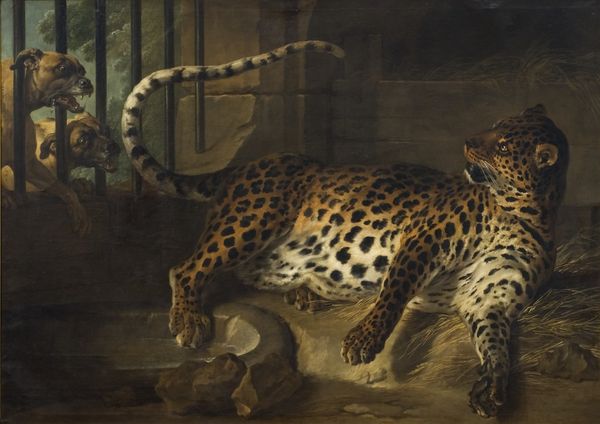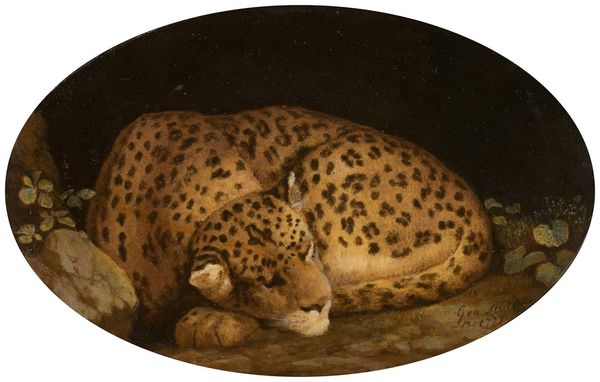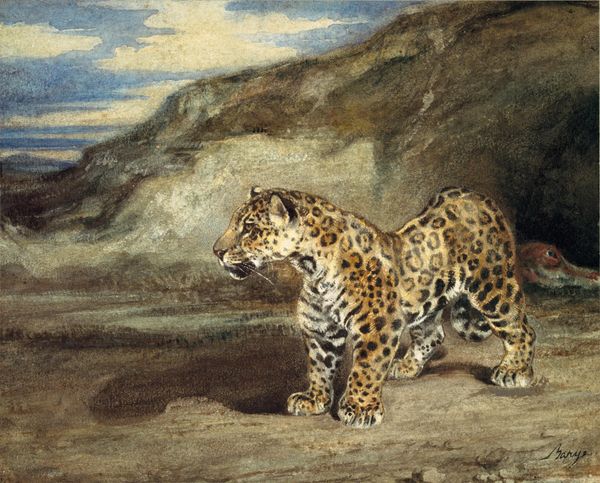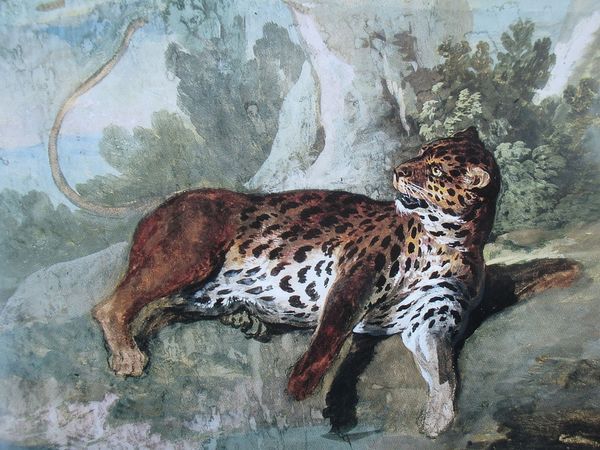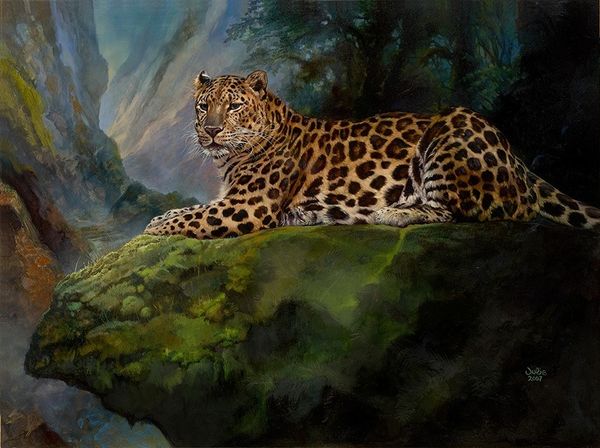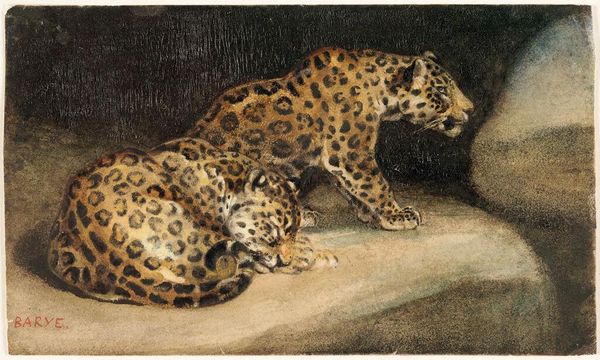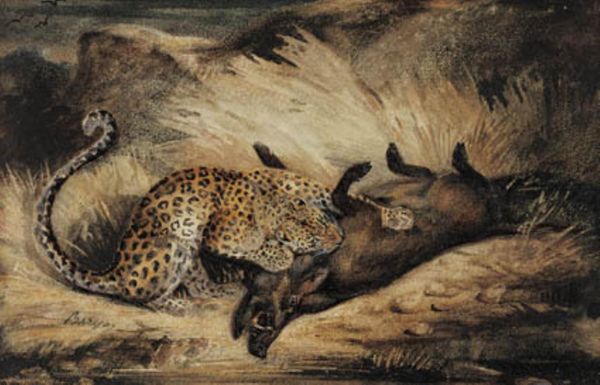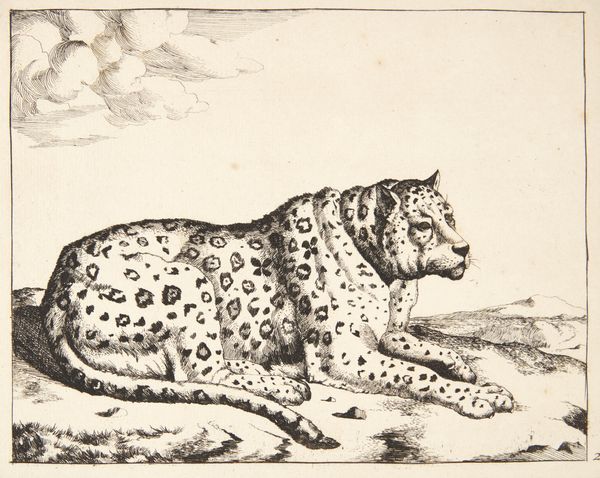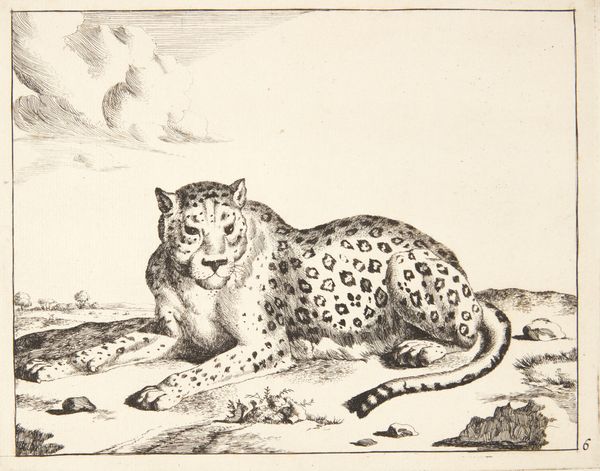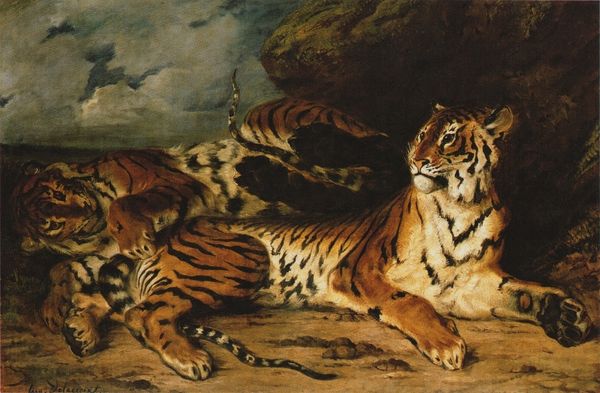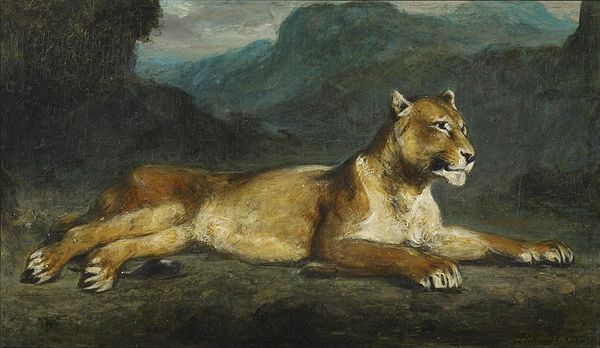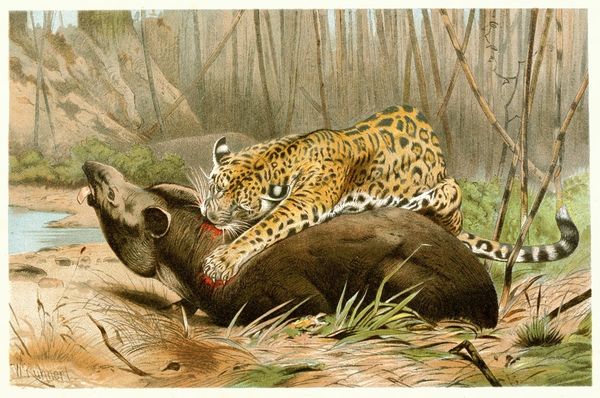
painting, oil-paint
#
portrait
#
baroque
#
animal
#
painting
#
oil-paint
#
landscape
#
oil painting
#
animal portrait
#
realism
Dimensions: 131 x 160 cm
Copyright: Public domain
Curator: Let's turn our attention to Jean-Baptiste Oudry's "Leopardess" from 1741, currently housed here at the Staatliches Museum Schwerin. Editor: First impression? Those eyes are intensely green and surprisingly knowing! Almost human, yet still utterly feline, she makes you wonder what she's thinking. Curator: Oudry, of course, was known for his remarkable ability to capture texture, and in this oil painting, you can almost feel the coarse, patterned fur beneath your fingertips. Notice the almost photorealistic representation, a defining attribute of realism style, coupled with a romantic sensibility inherent to the Baroque. But for whom did Oudry toil to capture such texture and accuracy, and under what economic conditions? Editor: The labor in the layering of paints must have been exhaustive. The image hints at exoticism, maybe a royal menagerie? Consider the role of the artist as both observer and craftsman here—dependent upon the demands of a noble patron who likely aimed to flaunt their ownership. It wasn’t a cheap or easy process back then. The painting could serve to express domination over nature, brought to the interior, and even over its rendering on the surface. Curator: I imagine that. I find the landscape element to be incredibly impactful, contrasting with her immediate, engaging gaze. She blends in but very much stands out from this murky setting at the same time, she looks very integrated into this rough context, she almost IS nature, not just some foreign ornament to parade in front of privileged eyes. This is the most interesting ambivalence, if you want my opinion. Editor: Exactly! And the material components used – the canvas, oil pigments, and brushes, tell a deeper story of global trade and material access during Oudry's time. Curator: What began as an exercise in regal, aesthetic posturing ultimately provides an insight into the mind of a creative personality reflecting upon its cultural landscape... Editor: Yes, a dialogue is held not only between Oudry and his subject, or even among Oudry, the aristocracy, and us but also within Oudry's own perspective of what it means to work in a period deeply divided by those social tiers! The tools of creation contain narratives we can begin to excavate.
Comments
No comments
Be the first to comment and join the conversation on the ultimate creative platform.

